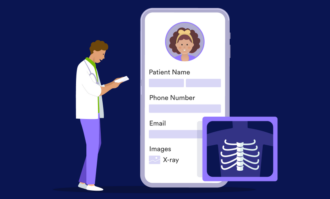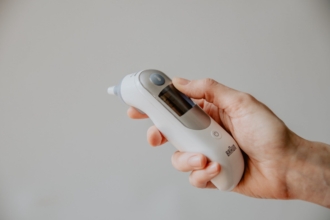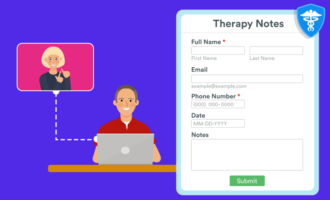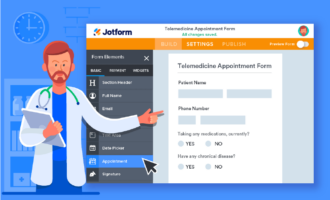Patient visits to doctors’ offices have declined as much as 50 percent since the beginning of the coronavirus pandemic, but the need for care is greater than usual, so patients and physicians alike are turning to telehealth options. The American Medical Association (AMA) has cited telemedicine and telehealth as essential to stopping the spread of the coronavirus and has released guidelines for healthcare organizations new to the practice.
Taking patient care online begins, as the AMA has noted, with patient consent for any telemedicine services. Here’s what you need to know to get valid patient consent online.
Just so you know
You’ve got your medical toolkit ready to help those in need — but what about your telemedicine toolkit? With Jotform’s HIPAA-friendly telehealth platform, you can easily create online medical forms that keep sensitive health data safe.
Payer and state requirements
Before getting patient consent online, you need to know both the requirements of your state and the requirements of your payer. Some states don’t require you to obtain patient consent, and others will accept verbal consent. Still others require that the patient sign a consent form and that you store it in their records. You’ll need to check with your local jurisdiction to find out what you need to do.
Written consent may also be necessary to get reimbursed for telehealth services. Some insurance providers, along with Medicaid, require you to obtain written consent from your patient as a condition of payment for your services. When in doubt, get consent in writing, just in case.
How to get written consent
A basic challenge of telemedicine is the exchange of sensitive documents between care providers and patients. For example, what if you email a PDF form for your patient to print out, scan, and email back, but the patient doesn’t have access to a printer or scanner? There’s also the security issue of using email to send confidential information.
An easier way to get patient consent online is to create a consent form through a provider like JotForm. With online forms, your patients can fill out their information, electronically sign the form, and send it back to you securely, even from their mobile devices.
What getting consent entails
Before you start crafting your own online consent forms, there are a few things to consider. First are the requirements for the payer and Medicaid. They may have a template you can download and use for your own consent forms.
An online consent form includes everything on a form that patients would fill out in your office, but it’s specific to telemedicine. Here are a few basic things you need to have on the form:
- Information about the patient’s rights when they’re receiving telehealth services, including their right to refuse or stop treatment.
- What the patients’ responsibilities are when they’re receiving telehealth treatment.
- Your formal complaint or grievance process in case ethics or other concerns or issues come up in the course of treating the patient in a telemedicine setting.
- Details about the potential benefits, as well as risks like privacy and security, and the constraints of telemedicine — for instance, you may be unable to prescribe controlled substances during a telehealth visit.
- The contingency plan in case technical issues prevent you or the patient from logging in, or cause the session to end abruptly.
- Any policies you have for billing, scheduling, and cancellations of telehealth appointments.
- A statement regarding features that help with Health Insurance Portability and Accountability Act (HIPAA) compliance and the confidentiality of the encounter.
Additionally, if you’re treating pediatric patients, you may need to include specific provisions in your consent form. For example, Nebraska’s Medicaid program has special rules for children receiving behavioral health services via telehealth.
Just so you know
If your organization is fighting against COVID-19, you can apply for a free, unlimited, HIPAA-friendly Jotform account with our Coronavirus Responder Program.
You may not need to get written consent every time you treat a patient remotely, but it’s a good idea to have patients sign a consent form every year, or after a long period of not treating them. It’s also a good idea to regularly check state and payer guidelines for any changes.
If you use an online form, it’s fairly easy to get patient consent online for a telehealth visit. Choose a provider that lets you integrate electronic signatures to make this process even faster, and be sure to follow all state and payer guidelines to make sure you’re in compliance.


















































Send Comment:
1 Comments:
More than a year ago
Does a patient require log in to sign a consent?